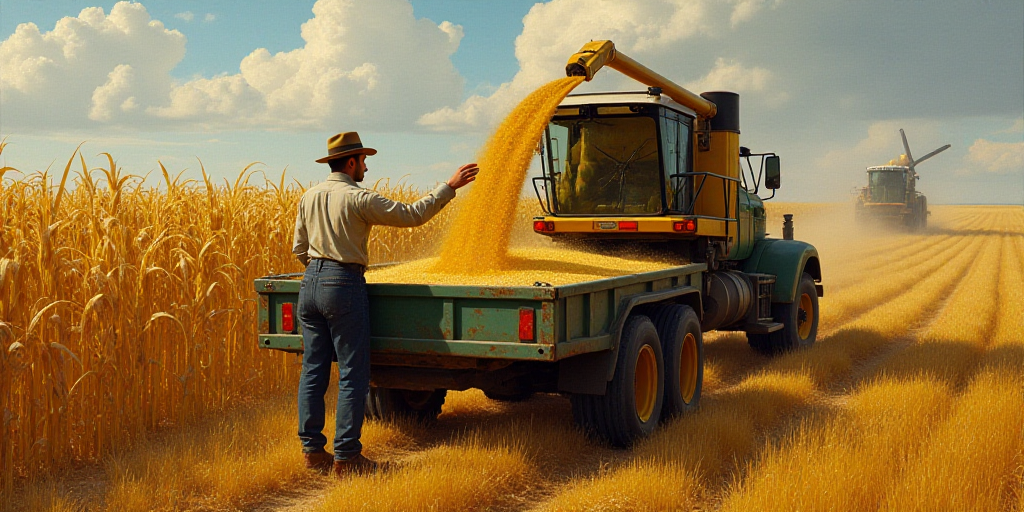Background on Key Figures and Relevance
The Chicago Board of Trade (CBOT) is a prominent marketplace where futures contracts for agricultural commodities, including corn and soybeans, are traded. These futures contracts serve as agreements to buy or sell these commodities at a predetermined price and date, allowing farmers and businesses to hedge against price volatility. Corn and soybeans are crucial crops in the United States, contributing significantly to the country’s agricultural economy and global trade.
Market Developments
On Monday, futures for corn and soybeans on the CBOT fell due to favorable weather forecasts for U.S. harvests, according to traders.
The decline in grain futures was further exacerbated by the absence of a trade agreement announcement between the United States and China, which some operators had anticipated before markets closed on Friday for the Independence Day holiday.
Last week, grain futures surged as traders adjusted positions in anticipation of a warmer or drier weather outlook across the U.S. during the extended holiday weekend, or in case of a trade-related announcement by President Donald Trump during a speech in Iowa.
Weather Conditions
According to weather firm Vaisala, recent rainfall has benefited the U.S. Plains and Midwest, increasing soil moisture levels in Iowa. Temperatures are expected to remain near normal across most areas this week, which is favorable for corn during the critical pollination phase of development.
Market Impact
The falling futures prices reflect traders’ concerns over the uncertain outcomes of trade talks between the United States and its key partners, especially China, which is the largest importer of soybeans. Washington is reportedly nearing the completion of several trade agreements in the coming days.
Specific Futures Price Changes
- The most active soybean futures dropped 29 cents to $10.2025 per bushel.
- Corn futures fell 13.25 cents to $4.2375 per bushel.
- Wheat futures declined 9.25 cents to $5.4750 per bushel.
Key Questions and Answers
- What are corn and soybean futures? Corn and soybean futures are contracts traded on the Chicago Board of Trade (CBOT) that allow farmers and businesses to lock in prices for these commodities at a future date, protecting them from price fluctuations.
- Why did corn and soybean futures fall on Monday? Futures fell due to favorable weather forecasts for U.S. harvests and the lack of a trade agreement announcement between the United States and China, which some traders had anticipated.
- How have recent weather conditions affected the crops? Recent rainfall in the U.S. Plains and Midwest has increased soil moisture levels, benefiting crop growth during critical development phases like pollination.
- What are traders concerned about regarding U.S.-China trade relations? Traders are worried about the uncertain outcomes of ongoing trade talks between the United States and China, a major importer of soybeans, as Washington is reportedly close to finalizing several trade agreements.






